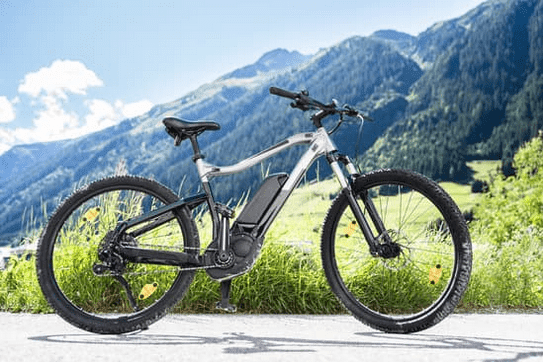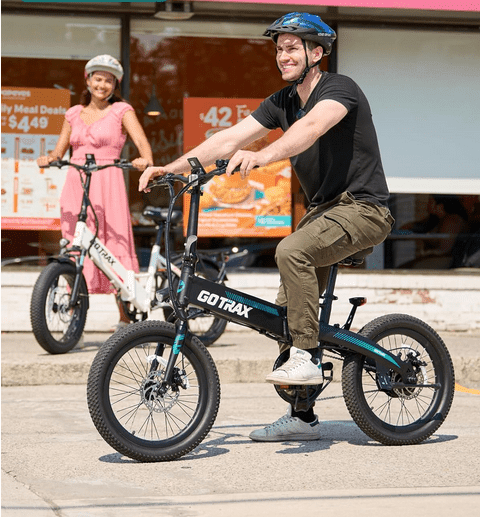Electric Bike Safety and Regulations: Riding with Confidence
Introduction
Electric bikes, also known as e-bikes, have become increasingly popular as an eco-friendly and efficient mode of transportation. With their electric motors assisting riders, these bikes offer a convenient and enjoyable way to navigate urban environments. However, like any other form of transportation, safety should be a top priority when riding an electric bike. This comprehensive guide will delve into electric bike safety and regulations, providing valuable insights, expert advice, and practical tips to ensure a safe and enjoyable riding experience.
Electric Bike Safety and Regulations: What You Need to Know
Understanding Electric Bike Regulations
Before embarking on your electric bike adventure, it's crucial to familiarize yourself with the regulations governing their use. Electric bike regulations may vary depending on your country or region, so checking with local authorities is essential to ensure compliance. These regulations generally cover speed limits, age restrictions, helmet requirements, and where e-bikes can operate.

The Importance of Helmet Usage
Wearing a helmet is a wise decision and a legal requirement in many jurisdictions. Electric bikes can reach higher speeds than traditional bicycles, making it vital to protect your head in case of an accident. When selecting a helmet, ensure it meets safety standards and fits snugly on your head. Remember, your safety is worth every effort to protect it.
Mastering Bike Control and Handling
As with any new vehicle, it takes time to become familiar with the handling and control of an electric bike. Practice in a safe and controlled environment before taking your e-bike on busy roads or challenging terrains. Get a feel for the bike's acceleration, braking, and maneuverability. This will instill confidence and improve your ability to react swiftly in various situations.
Understanding Traffic Laws and Signals
Electric bikes are subject to the same traffic laws and signals as traditional bicycles. Understanding and adhering to these regulations is crucial to ensure your safety and the safety of others. Familiarize yourself with hand signals, traffic signs, and local laws related to cycling. By following the rules of the road, you contribute to a harmonious and safe cycling environment.
Maintaining Proper Visibility
Visibility plays a crucial role in ensuring your safety on the road. Wear bright or reflective clothing, especially during low-light conditions to make yourself easily visible to other road users. Additionally, equip your electric bike with adequate lighting, including front and rear lights and reflectors. These simple measures significantly enhance your visibility, reducing the risk of accidents.
Practicing Defensive Riding
Defensive riding is an essential skill for any cyclist, and it becomes even more critical when riding an electric bike. Always assume that other road users may not see you and anticipate potential hazards. Keep safe from vehicles, especially at intersections, and avoid riding in blind spots. Adopting a defensive mindset significantly reduces the risk of accidents and enhances safety.

Performing Regular Maintenance
Proper maintenance is vital to keep your electric bike in optimal condition and ensure safe operation. Regularly check the brakes, tires, and electrical components of your e-bike. If you notice any issues, such as worn brake pads or loose connections, address them promptly. Keep your bike clean and lubricate the chain regularly for smooth and reliable performance.
Storing and Charging Your E-Bike
When it comes to storing and charging your electric bike, consider safety as a priority. Store your e-bike in a secure location, preferably indoors or locked. This protects it from theft and inclement weather conditions. When charging your bike's battery, follow the manufacturer's instructions and use the designated charger. Avoid overcharging the battery, and never leave it unattended while charging.
Interacting with Pedestrians and Other Cyclists
As electric bikes share pathways and roads with pedestrians and traditional cyclists, it's crucial to interact respectfully and responsibly. Slow down when approaching pedestrians, give them ample space, and signal your presence with a bell or verbal communication. When encountering other cyclists, pass them cautiously, allowing sufficient room and ensuring their awareness of your presence.
Navigating Challenging Terrain Safely
Electric bikes provide the advantage of tackling challenging terrains with ease. However, it's crucial to approach these terrains with caution and proper safety measures. Adjust your electric bike's assistance level to maintain control and avoid sudden acceleration when riding uphill. When descending, apply the brakes gradually and maintain a balanced position on the bike. Always be mindful of your surroundings and adjust your riding technique accordingly.

Electric Bike Safety and Regulations FAQs
- Are electric bikes legal on the roads?
Yes, electric bikes are legal in many countries and regions on the roads. However, specific regulations may vary, so you must check with your local authorities for accurate information.
- Do I need a license to ride an electric bike?
In most jurisdictions, you do not need a license to ride an electric bike. However, age restrictions and speed limits may apply, so it's crucial to be aware of the regulations in your area.
- How fast can electric bikes go?
The speed of electric bikes can vary depending on the model and local regulations. Most electric bikes generally reach speeds between 20 and 28 miles per hour (32-45 kilometers per hour).
- Can I ride an electric bike on bike paths?
In many jurisdictions, electric bikes are allowed on bike paths. However, it's essential to check local regulations, as some paths may have specific rules regarding speed limits and types of bikes allowed.
- What safety gear should I wear when riding an electric bike?
It is strongly recommended to wear a helmet when riding an electric bike. Additionally, wearing bright or reflective clothing enhances visibility, especially during low-light conditions.
- How often should I service my electric bike?
Regular maintenance is essential to ensure the safe operation of your electric bike. It is recommended to service your e-bike at least once a year or according to the manufacturer's guidelines.
Conclusion
Electric bikes offer a convenient and eco-friendly mode of transportation, but safety should always be a priority. By familiarizing yourself with electric bike regulations, practicing defensive riding, and maintaining your bike properly, you can enjoy a safe and enjoyable riding experience. Always wear a helmet, be visible to others, and adhere to traffic laws. With these precautions in mind, you can confidently navigate the streets on your electric bike and embrace the freedom it offers.
Related Featured Articles:
Can You Ride an Electric Bike in The Rain?
"Electric Bikes vs. Traditional Bikes: A Comparative Analysis."
Exploring the Three E-bike Categories


